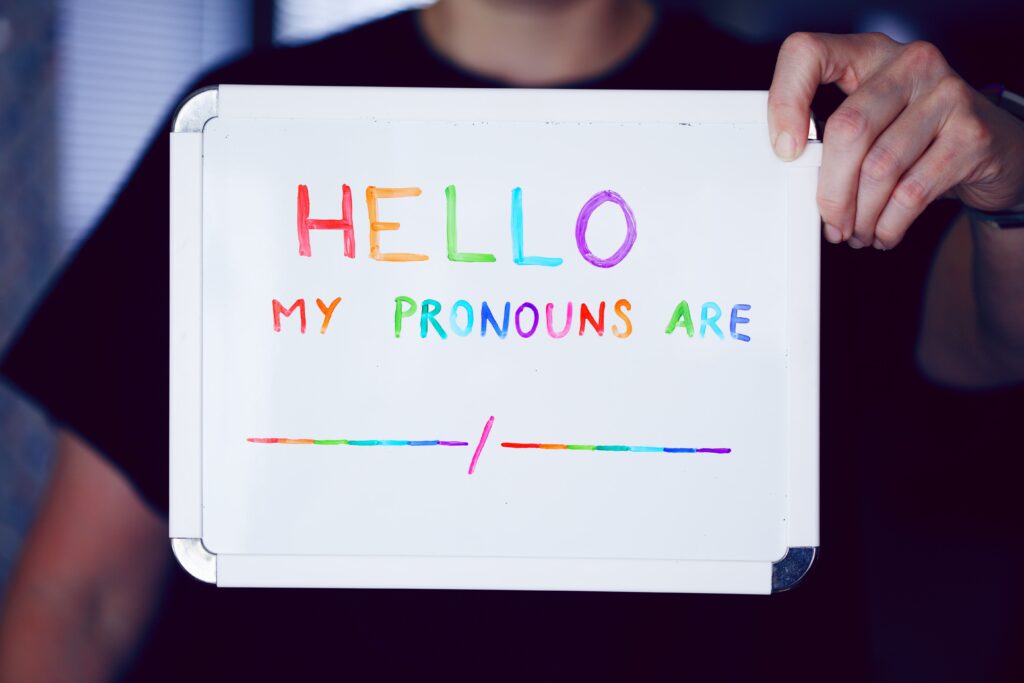
Factsheet: 8 ways to promote LGBT+ inclusion at work
LGBT+ employees feel less able to bring their authentic selves to work. A report by the CIPD found that LGBT+ employees typically report lower levels of:
- psychological safety,
- wellbeing,
- job satisfaction.
An inability to be authentic in the workplace may result in mental health challenges and social isolation.
Our factsheet offers tips for promoting inclusion in the workplace.
1. Promote allyship
Creating an inclusive workplace is everyone’s responsibility. Promoting allyship of LGBT+ employees helps to create a more inclusive workplace. A report by Deloitte reveals the power of allyship, including Employee Resource Groups (ERGS).
40% believe that allies speaking up can help foster more LGBT+ inclusive work environments.
ERGs can “create a safe space for LGBT+ employees and their allies to connect,” says Deloitte. Creating ERGs means employees are likelier to be ‘out’ at work. Allyship helps LGBT+ employees feel more comfortable in their workplace.
Deloitte’s report found that 40% believe that allies speaking up to address non-inclusive behaviours and proactively listening to and learning from their LGBT+ colleagues can help foster more LGBT+ inclusive work environments.
Similarly, a CIPD report says: “Creating staff networks, or employee resource groups, is one way to provide LGBT+ people with opportunities for voice and participation while allowing employees to meet others across the organisation, share experiences, support each other and build a platform for positive change.”
2. Visible use of pronouns
One way to promote inclusion is to encourage the visible use of pronouns.
More than 70% of LGBT+ employees indicated that visibly using pronouns in email signatures contributes to LGBT+ inclusion, according to Deloitte.
It can help make sure others perceive employees as they perceive themselves and empower people to bring their authentic selves to the workplace.

3. Encourage people to speak out
Make sure all employees are clear about what is acceptable and non-acceptable behaviour. For example, LGBT+ employees are more likely to experience microaggressions in the workplace, according to McKinsey.
Microaggressions include:
- Being interrupted or spoken over more than others
- Having their judgement or areas of expertise questioned
- Having to be careful in talking about their private life
Nearly one-third of surveyed LGBTQ+ employees reported experiencing a microaggression.
4. Encourage managers and leaders to set the tone
Its vital HR managers and employees have the support of senior leaders to promote LGBT+ inclusion in the workplace.
Research shows that when LGBT+ employees perceive their co-workers and line manager as supportive and concerned with their wellbeing, they are more likely to be satisfied, both with their work and their life in general.
ClearTalents at Work encourages an open dialogue between employers and managers.
Discover how ClearTalents can help you
achieve your inclusion objectives
5. Don’t treat LGBT+ employees as one homogenous group
Every LGBT+ employee has a unique experience and journey, including in the workplace. Conflating challenges and solutions for LGB+ workers with those for trans and non-binary workers could be damaging, given that sexuality and gender identity are different.
Reports show significant differences between the experiences of individuals within the LGBT+ community.
For example, four in 10 LGB+ and over five in 10 trans employees experienced workplace conflict in the last year. Experiences of microaggressions also differ, according to McKinsey’s survey. “Gender intersectionality matters—LGBTQ+ women and transgender employees were more likely than gay men to report experiencing microaggressions in the workplace.”

ClearTalents diversity profile covers all 9 protected characteristics as outlined in The Equality Act 2010.
6. Diversity and Inclusion training
Consider diversity and incusion training. For example, Unconsious Bias training may reveal the assumptions people may make in the workplace – when they see a ring on a finger or pictures of children on a desk.
7. Encourage conversations about mental health
We know from companies that use ClearTalent that adjustments for mental health are some of the most requested. Burnout and mental health issues can be difficult to discuss.
According to McKinsey, members of the LGBTQ+ community may find mental health harder to discuss. All responding employees reported experiencing similar levels of burnout, only 14 percent of surveyed straight employees said they were uncomfortable with sharing mental-health concerns with coworkers, compared with 29 percent of their LGBTQ+ counterparts.
The figure soared to 47 percent for transgender employees.
8. Inclusive policies and procedures
Make sure policies are fully inclusive of LGBT+ people including:
- Pensions
- Family Leave
- Health insurance